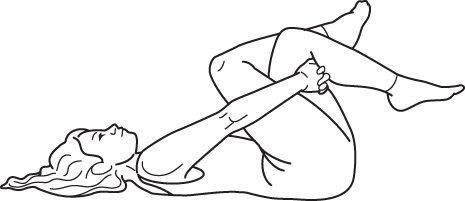Intro
The idea that we can mechanically stretch a muscle is mostly mistaken.
According to the sliding filament theory of muscle contraction, each muscle cell functions best at one length, where the maximum number of cross-bridges can occur. If we physically lengthen the muscle in too short a time, we will be reducing the number of cross-bridges and therefore decreasing the muscle’s strength, not to mention injuring the delicate proteins that hold the sliding filaments in place.
The only way to safely stretch a muscle is by adding sarcomeres, the tiniest functional units of muscle. This process is well-documented, and can occur with immobilization in a lengthened position. The muscle will respond by adding new sarcomeres in series over a period of weeks to months.
What Stretching Means to Most People
When we hold an arm or a leg in a position for a few seconds to perform a “stretch” we are more correctly performing “functional lengthening”. Functional lengthening targets muscles, and works by temporarily blocking or decreasing messages from the central nervous system that tell the muscle to tighten. This process results in weaker muscles for up to 30 minutes after the stretch.
What is "Functional Lengthening" ?
Muscles are called contractile tissues because they will shorten or contract when nerve impulses reach them. They rely on the central nervous system (brain and spinal cord) to tell them what to do. The CNS, in turn, relies on a network of sensors, some within the muscles themselves, some within and around joints, and some in skin and fascia, to initiate, halt or modify muscle contractions.
Functional lengthening sends information into the CNS from peripheral receptors. You know you've got a "good stretch" because you can feel it, right ? Well, before you feel them, those sensations are transmitted along nerve pathways that cause a decrease in CNS output to the stretched muscles. But the decrease is only temporary, which is why you'll have to stretch and stretch again. Every stretch carries some risk of injury.
So, to minimize risk and find a more permanent solution, if you have a tight muscle, the appropriate first step of a solution is to ask “why is it tight?”. Unless a muscle has been injured or is diseased, the only reason it is “tight” is because it is being told to contract by the central nervous system. To make the muscle “looser”, we need to find the source of the neural stimulus. It could lie in faulty neural couplings in the brain or spinal cord, especially after injury. In most cases, the stimulus might be coming from mechanical, thermal or chemical receptors around a joint in the periphery that are not happy, from muscle spindles in a stretched muscle, from an irritated spinal nerve, or from another source.
The only way to get the muscle to relax, and therefore lengthen, is to remove the stimulus that is causing it to contract. See Glossary for some examples of functional lengthening techniques.
Why do so Many People Need to Stretch ?
Many people do have various unnoticed dysfunctions that cause muscles to behave badly. We have all found ourselves in situations like these: we attempt to move in an awkward position, we stay in one position too long, we move suddenly, or we exert high effort. All of these situations put us at risk of developing a biomechanical dysfunction, which creates a semi-permanent change in the way muscles function.
A single dysfunction need not cause symptoms, but even a single dysfunction will change how muscles function. Some muscles will be facilitated by the CNS. These facilitated muscles will become "tight" and will be recruited for tasks more easily than usual. Some muscles will be inhibited by the CNS. These inhibited muscles will become "lazy" and will be more difficult than usual to recruit for tasks. Some clinicians have recognized patterns in these muscular changes and named syndromes based on them.
We can continue to function in the absence of symptoms, and even when symptoms are present, but to do so without addressing the underlying dysfunctions only reinforces the altered state of our muscles (think of your daily activities as continual "practice"). Most of these dysfunctions can be corrected with regular physical therapy care. We do not need to inflict further trauma on our bodies by "stretching" things that don't need it.
In particular, many sacroiliac joint (SI) dysfunctions are not diagnosed. An SI dysfunction can lead to asymmetrical stretch placed on one set of hamstrings, or one piriformis, resulting in a 'tight" muscle. The stretching technique below, in particular, seems to be widely prescribed for a "tight" piriformis (over-prescribed IMHO), and frequently does more harm than good, especially if performed carelessly or without proper instruction/supervision.
The technique illustrated above is commonly used to "stretch" the piriformis muscle (in this case the right piriformis is being stretched. However, it also puts asymmetrical stresses on the SI joint capsules, lumbo-sacral fascia and subsequently the lumbar spine and discs, potentially contributing to more serious issues for the user in the future.
While many techniques can provide temporary relief, a more permanent solution can only be found by correctly identifying the receptor or receptors involved in keeping the muscles tight, figuring out why they are misbehaving, and then addressing the underlying problem.
We suggest that this is best done with help from a healthcare professional.



